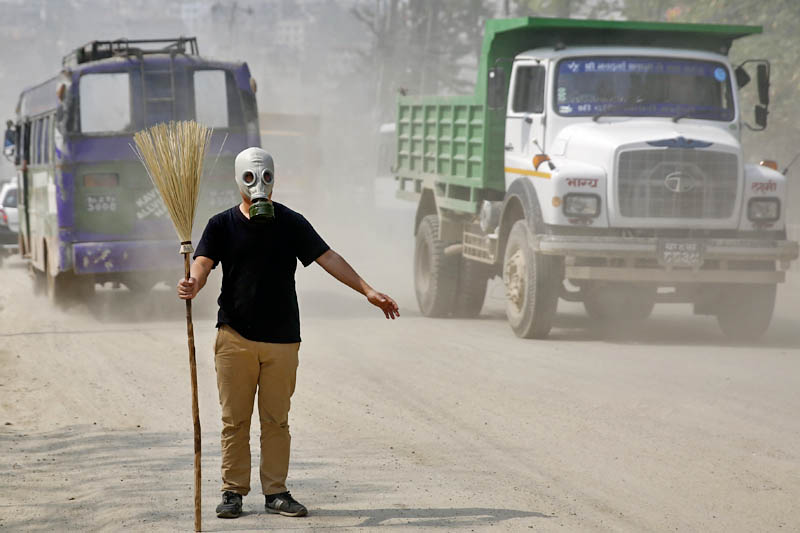KMC to seek aid for pollution control
Currently, nine air quality monitoring stations are in operation in the Valley
Kathmandu, October 14
Kathmandu Metropolitan City will submit a proposal to Asian Development Bank at the earliest seeking further assistance to control air pollution in the metropolis.
After presenting air pollution status of KMC at Technical Assistance Air Quality Workshop in Thailand this week, KMC is all set to prepare a proposal for future programmes relating to air quality monitoring and data analysis.
Environment Management Division Chief at KMC Rabin Man Shrestha had presented a report on the status of air pollution scenario in the metropolis at the international workshop attended by ADB and World Bank representatives.
“We plan to submit a proposal regarding air pollution control to donors,” Shrestha told The Himalayan Times. The proposal also includes plans to reduce air pollution across the country.
Senior Divisional Chemist at the department Shankar Prasad Paudel said small and big scale programmes would be developed to reduce air pollution.
Currently, nine air quality monitoring stations are in operation in Kathmandu Valley to measure air pollution. Stations have been set up at Shankhapark in Kathmandu, TU premises in Kirtipur, Sainik Awasiya Mavbidhyalaya in Bhaktapur and Bhaisepati in Lalitpur.
Other air quality monitoring stations have been set up in Ratnapark, Patan Dhoka, Kesharmahal and Maharajgunj in Kathmandu Valley and Dhulikhel in Kavrepalanchowk.
The government has also begun accessing US Embassy Air Quality Monitor data from March 2017.
According to the department, the stations have been sending data regularly to the central sever. The stations measure dust particles, especially particulate matter (PM 10) and PM 2.5, levels of carbon monoxide, sulfur dioxide, nitrogen oxide and ozone in the atmosphere.






